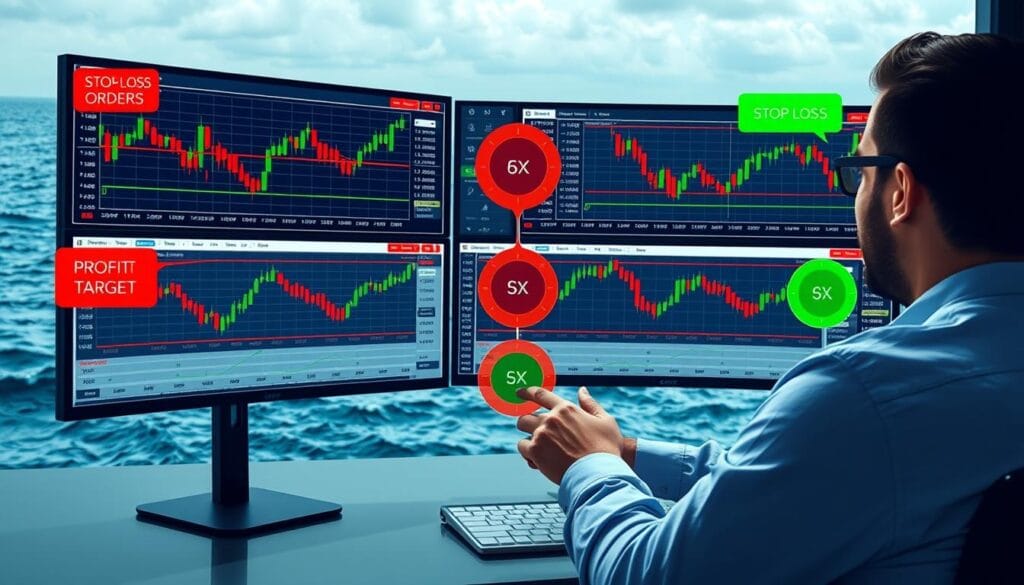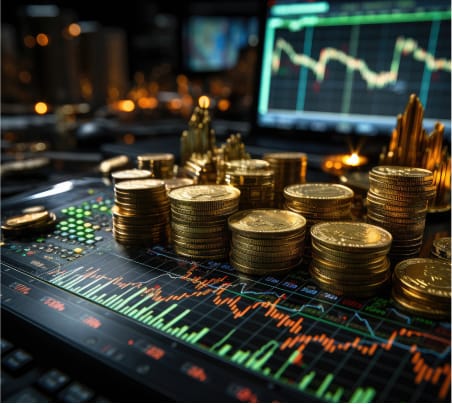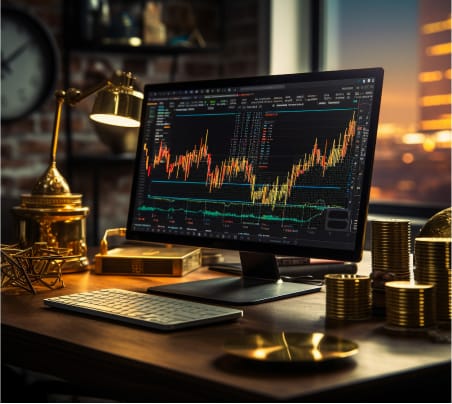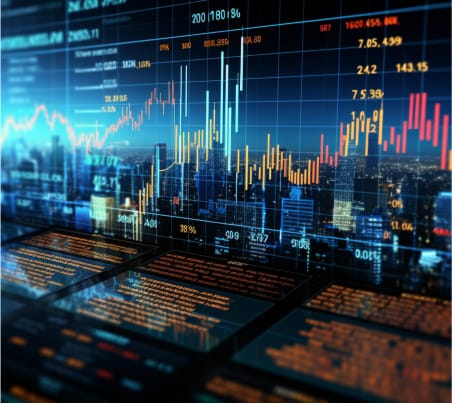Forex market volatility is about quick changes in currency pair prices. It deeply affects trading tactics. Knowing how to handle this volatility is key for anyone in the currency markets.
Traders must be quick to adjust to new conditions. Having solid Forex trading strategies is vital. It helps reduce risks from unpredictable price shifts, improving chances of success in Forex trading's dynamic environment.
Key Takeaways
- Forex market volatility involves rapid changes in currency prices.
- Understanding market volatility is key to successful Forex trading.
- Developing strategies for stability helps mitigate risks.
- Effective Forex trading strategies can enhance trader resilience.
- Adaptability is crucial in navigating currency markets.
Understanding Forex Market Volatility
Forex market volatility is about how much currency exchange rates change. A lot of things cause these changes, affecting how people trade. By understanding what causes these shifts, traders can make smarter choices. We'll look at what makes the market move and key signs of changes in Forex.
What Causes Market Volatility?
Many things can make exchange rates go up or down. Here are some big factors:
- Economic Data Releases: Things like GDP, unemployment rates, and how people feel about spending can change currency values.
- Geopolitical Events: Issues like political unrest, elections, and wars can quickly change how the market feels.
- Changes in Central Bank Monetary Policy: When banks like the Federal Reserve change their plans, currency values can shift a lot.
Indicators of Volatility in Forex Trading
Knowing how to spot signs of volatility helps traders make better moves. Here are some common tools they use:
| Indicator | Description | Application |
|---|---|---|
| Average True Range (ATR) | A measure of market volatility that shows how much an asset moves, on average, during a given time frame. | Helps traders assess the risk associated with entering or exiting trades. |
| Bollinger Bands | Volatility bands placed above and below a moving average to indicate overbought or oversold conditions. | Traders use it to identify potential reversal points. |
| Volatility Indexes | Tools that measure the level of market volatility, often used to gauge market sentiment. | Useful for determining when to enter or exit positions. |
Key Strategies for Navigating Forex Market Volatility
Understanding how to handle the Forex market's ups and downs is key. Traders can use different strategies to keep risks low. Important tools like stop-loss orders and limit orders help a lot in making smart trading moves.
Implementing Stop-Loss Orders
Stop-loss orders are a trader's safety net. They close a trade automatically if prices move too far against it. For example, setting a stop-loss order 50 pips from your start point protects you if things go south. This means you don't have to watch the market every second to avoid big losses.
Using Limit Orders to Optimize Trade Execution
With limit orders, traders choose the price they enter or exit a trade. It's a great way to use strategy, even when the market is bouncing around. Say you want to buy a currency at a price that's better than right now. Setting a limit order can make that happen. It's a smart move to get a good deal and possibly make more money.
| Order Type | Purpose | Advantages | Risks |
|---|---|---|---|
| Stop-Loss Orders | Limit potential losses | Automatic execution, minimizes emotional decision-making | May trigger in volatile conditions, resulting in unwanted position closure |
| Limit Orders | Optimize entry/exit points | Capture price fluctuations favorably, control trade execution | Execution may not occur if market bypasses set price |
Technological Tools to Manage Volatility
Forex trading is fast-paced and unpredictable. Using technology can give traders an edge in this changing market. Many now use automated trading systems to improve their strategies and make better choices.
Automated Trading Systems
Trading bots are essential in Forex. They automatically make trades based on set rules. This takes away some of the stress from trading. Algorithms help these systems quickly analyze the market, especially when it's very active.
Utilizing Volatility Indicators and Charts
Volatility indicators and charts are key for smart trading. Tools like the Average True Range (ATR) and Bollinger Bands help understand market moves. Charts show price trends and volatility, helping traders find the best moments to buy or sell.

Risk Management Techniques in Forex Trading
Effective risk management is key to success in Forex trading. It helps traders lower losses while finding good market chances. Important techniques include spreading investments and deciding how much to trade. These help in managing a Forex portfolio better.
Diversification of Currency Pairs
Spreading capital across different currencies lessens the risk from any single one's ups and downs. Traders mix major, minor, and exotic currencies. This strategy reduces bad market effects and opens new profit chances. A diverse Forex portfolio deals better with uncertain markets, stabilizing returns.
Position Sizing: Finding the Right Balance
Position sizing is about how much capital to risk on each trade. It takes into account the trader's total account size and how much risk they can handle. Using a fixed method, traders can safeguard their money and aim for the best gains. A common rule is risking only 1-2% of your account on a trade. This way, traders avoid big losses from a series of bad trades.

| Strategy Type | Description | Benefits |
|---|---|---|
| Diversification | Investing in various currency pairs | Reduces overall risk exposure |
| Position Sizing | Calculating trade size based on account balance | Protects capital and enhances loss control |
Navigating Forex Market Volatility: Emotional Control
Mastering emotional control is key to success in Forex trading. The way we handle our feelings plays a critical role. When fear and greed take over, it can lead us to make poor decisions. It's important to recognize when emotions influence our thinking. By managing these feelings well, we can trade better.
The Role of Psychology in Trading
The mind plays a big role in trading. Our feelings can really affect how we perform, especially when the market is all over the place. Feeling scared might make us leave a trade too early. Being too greedy might make us stay in a trade for too long. Understanding these mental aspects helps us control our emotions. This lets us follow our trading plans, even when we're unsure.
Maintaining Discipline During Market Swings
Keeping disciplined is vital in Forex. A well-thought-out trading plan helps us stay steady emotionally. When the market is wild, sticking to our plan is crucial. It helps us manage our feelings. Being disciplined makes us more consistent, leading to better trading. It helps us control our emotional reactions better.

Conclusion
Achieving stability in the Forex market amid its ups and downs needs a well-rounded plan. This article has laid out key strategies for dealing with market shifts. These include setting stop-loss and limit orders and using high-tech tools and indicators. These help in managing risk well.
We've revisited how vital it is to manage risks and keep emotions in check when trading. Keeping disciplined during market changes helps. Plus, always learning helps traders tweak their methods. Remember, being flexible and alert helps you succeed in the Forex world's constant changes.
Lastly, we've stressed being ready and resilient against market challenges. Sharpen your skills, use effective tools, and build a strong mind. These steps prep you to do well in the fast-moving Forex market.













